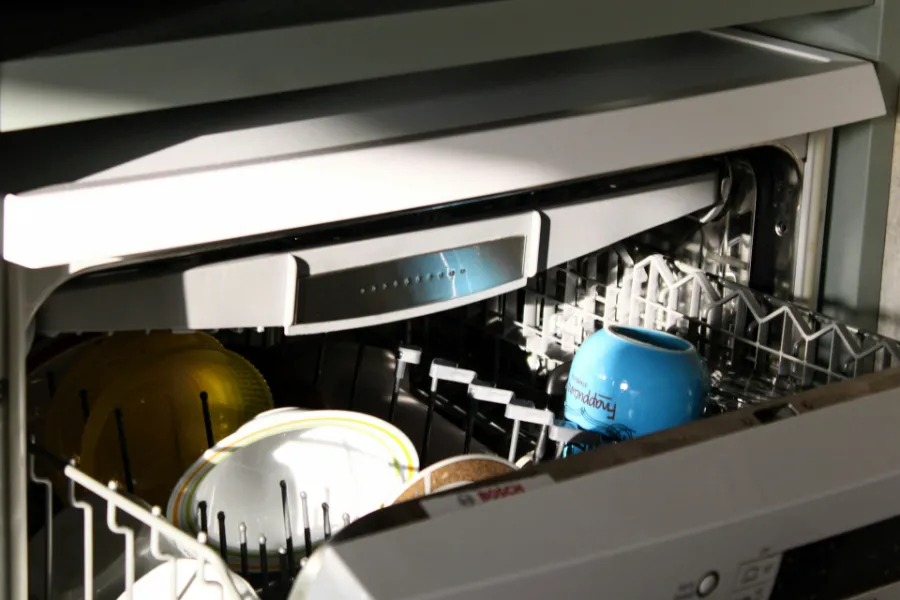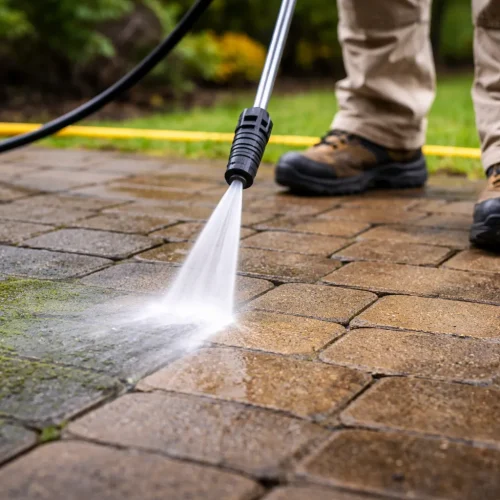
Your dishwasher works hard. Every day, it powers through baked-on lasagna, greasy pans, and coffee-stained mugs. But over time, it collects something far less appealing—food residue, soap scum, and mineral deposits. The result? A machine that smells a little off, looks dull inside, and just doesn’t wash as well as it used to. If you’re serious about keeping your kitchen running smoothly, learning how to clean dishwasher isn’t just a nice weekend project. It’s essential. This isn’t about quick wipe-downs or tossing in a random cleaner once a year. This is about using the right methods, sticking to a schedule, and keeping your dishwasher in top shape year-round.
Today, you’ll learn how to clean a dishwasher, how to deep clean it, how to tackle the filter and drain, and how to freshen it up with vinegar and baking soda. Let’s dive in.
Why Cleaning Your Dishwasher Matters
It’s tempting to believe that a dishwasher “cleans itself” during a cycle. Unfortunately, it doesn’t. Grease, grime, and limescale slowly build up inside, even while it’s running. The filter traps food particles, the spray arms can get clogged, and the drain can develop gunk that affects water flow.
Left unchecked, these issues lead to:
- Dull, cloudy glassware.
- Plates coming out with bits of food still stuck.
- Lingering, unpleasant odors.
- Reduced efficiency, meaning longer cycles and higher bills.
A dirty dishwasher can even start to smell bad enough to make you avoid opening it. Preventative maintenance—like monthly deep cleaning—keeps everything running smoothly and can save you the headache of costly repairs.
How Often Should You Clean It?
The general rule: once a month.
If you live in a hard-water area, you may need to deep clean more often to combat mineral buildup. If you only run it occasionally, every two to three months may be enough.
Quick maintenance schedule:
- After every load: Remove leftover food from the bottom.
- Monthly: Deep clean using vinegar, baking soda, or a dishwasher cleaner.
- As needed: Wipe the exterior, polish stainless steel, and freshen the gasket.
Before You Start: Prep for Success
Before tackling how to deep clean dishwasher, set yourself up properly:
- Empty it completely. Remove dishes, utensils, and racks if needed.
- Check your manual. Some models have special cleaning instructions.
- Gather supplies:
- White vinegar
- Baking soda
- Mild dish soap
- Microfiber cloth
- Old toothbrush or small cleaning brush
- Rubber gloves
- Toothpicks (for spray arm holes)
Step 1: How to Clean Dishwasher Filter
The filter is the heart of your dishwasher’s cleaning system. It traps food bits, grease, and sometimes even pet hair.
- Locate the filter at the bottom of the dishwasher.
- If it’s removable, twist or unlock it according to your manual.
- Rinse under warm water to remove debris.
- Use a soft brush to scrub away stubborn particles.
- Wipe the filter base inside the machine.
- Reinstall securely before continuing.
Cleaning the filter once a month keeps water flowing and prevents odors.
Step 2: How to Clean Dishwasher with Vinegar and Baking Soda
This is the go-to natural method for a fresh, deodorized interior.
Vinegar Cycle:
- Place 1–2 cups of white vinegar in a dishwasher-safe container.
- Put it on the top rack.
- Run the hottest cycle available, skipping the drying phase.
- Open the door to air-dry.
Baking Soda Cycle:
- After the vinegar cycle, sprinkle 1 cup of baking soda on the bottom.
- Run a short, hot cycle.
- Skip drying and let it air out.
Tip: Do vinegar first, then baking soda—never together in one cycle.
Step 3: How to Deep Clean Dishwasher with a Cleaner
If buildup is heavy, a commercial dishwasher cleaner is worth using.
- Follow product instructions for placement—some go in the detergent tray, others in the bottom.
- Run a normal cycle without adding detergent.
- Avoid mixing with other cleaning agents.
Step 4: How to Clean a Smelly Dishwasher
If odors are still lingering, focus on the sources:
- Remove and rinse spray arms.
- Use toothpicks to clear food from spray holes.
- Clean the door gasket with warm vinegar water and a toothbrush.
- Wipe inside crevices where moisture hides.
Step 5: How to Clean Dishwasher Drain and Drain Hose
Food debris can collect in the drain and even in the hose, causing smells and drainage issues.
For the drain:
- Mix 1 cup warm vinegar with 2 tablespoons baking soda.
- Pour into the drain opening.
- Let sit for 10–15 minutes.
- Flush with a kettle of boiled water (carefully).
How to clean dishwasher drain hose without removing it:
- Use the same vinegar-baking soda mix, but let it sit longer before flushing.
- This won’t replace a full hose cleaning but helps between deep cleans.
Step 6: How to Clean the Dishwasher Door and Gasket
- Wipe around the rubber gasket with warm soapy water or vinegar.
- For mold or stubborn grime, let the solution sit before scrubbing.
- Don’t forget the door hinges and edges.
Step 7: Exterior Shine and Final Touches
- For stainless steel, wipe with the grain using a vinegar-dampened cloth.
- Dry with microfiber to prevent spots.
- For extra shine, apply a drop of olive oil and buff.
- For plastic exteriors, just use soapy water.
Ongoing Maintenance Tips
- Scrape off large food before loading (no need to fully rinse).
- Rinse the filter weekly if you run daily loads.
- Keep the door slightly open between cycles to prevent mildew.
- Run hot sink water before starting the dishwasher for better performance.
Final Word: Keep It Consistent
Knowing how to clean your dishwasher is one thing. Actually doing it regularly is what keeps it performing at its best. Whether you choose vinegar and baking soda, a commercial cleaner, or a combination of both, the key is a monthly routine.
Your reward? Spotless dishes, no odors, and an appliance that lasts for years.
FAQs on How to Clean Dishwasher
Empty it, clean the filter, run vinegar and baking soda cycles, and wipe down all parts.
Use vinegar for deodorizing and baking soda for freshness—no chemicals needed.
Do vinegar first, then baking soda in separate cycles for best results.
Clean the filter, drain, and gasket, then run a vinegar cycle.
Flush with vinegar and baking soda, then hot water.
Combine filter cleaning, vinegar and baking soda cycles, and spray arm maintenance.
Maintain monthly deep cleans and remove food debris after each load.












